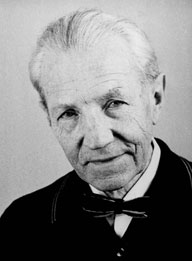Charles Hapgood
Leach, Shane
Shane Leach is an American writer who lives in Connecticut. He published Prehistory Explained [2007] as an ebook in May 2023 with the intention of proving ancient alien theory. I must be blunt and state that I consider the idea utter nonsense and have expressed my reasons throughout this compilation in particular in relation to Erich von Däniken, Zechariah Sitchin and ancient astronauts generally. In print, this Kindle book would fill over 700 pages offering an impressive triumph of quantity over quality.
The author’s introduction to the book tells you all you need to know about its content. “Prehistory Explained uses hundreds of pieces of irrefutable scientific evidence and hundreds of ancient writings to explain all the ancient mysteries. This book explores the following theories: Antarctica is the lost continent of Atlantis, the dinosaurs existed thousands of years ago not millions, ancient aliens left miles-high towers on the Moon, the Sapphire stone was a computer, Mars was inhabited in the ancient past, the Martian moon Phobos is an alien spacecraft, the Moon is an alien spaceship constructed by ancient aliens, ancient aliens directed panspermia by planting bacteria on the Earth, ancient aliens orchestrated the Cambrian Explosion, ancient aliens genetically-engineered us, and how the Anunnaki landed their X-Aerogel rocketships all over the Earth that have since depolymerized into stone pyramids.”
I therefore focused my attention on what is more relevant to this document, namely, Atlantis and found his offering sadly lacking.
Leach, along with regaling us with stories of ancient aliens and their spaceships also attempts to breathe new life into the Atlantis in Antarctica theory. He recycles the work of Rand Flem-Ath and Charles Hapgood and throws in the speculations of Richard Hoagland, but, for me, he fails to convince.
Overall the book is worth the $3 if only for its occasional comedic content.
Cappicciola, Walter
Walter Cappicciola (1953- ) was born in Cagliari, Sardinia and is by profession an engineer. However, it is clear that his real loves are the study of ancient history and his homeland. He has published two books on those subjects[1560][1561], which include a number of controversial ideas, such as the idea of a pole shift being the result of the Earth’s crust sliding over its underlying mantle. This is an echo of Charles Hapgood’s theories. Cappiccola claims that this type of pole shift resulted in a succession of global floods, climate change and mass extinctions.
He also proposes that there were antediluvian civilisations destroyed by these convulsions, the last of which occurred between 18,000 and 14,000 years ago. His second book, also in Italian, is entitled The other Atlantis. Civiltà scomparse, antiche conoscenze, megalitismo e Sardegna Disappearing civilizations, ancient knowledge, megalithism and Sardinia. He gave a talk in Cagliari on April 13th 2018 on the subject of ‘Atlantis in Sardinia‘?
Columbus, Christopher
 Christopher Columbus (1451-1506) is the name usually associated with the ‘discovery’ of America in the late 15th century. However, there appear to be a number of questions now being raised about the discoverer’s identity. Manuel Rosa seems to be leading the charge with his 2016 book, Columbus: The Untold Story[1889]. In a more recent article, Rosa succinctly claimed that “Historians mixed up the noble navigator Colón with the peasant weaver Colombo, giving the wool-weaver the glory that did not belong to him.” The article describes a convoluted but fascinating story of forgery, mistaken identity and misinformation that is well-documented and deserves a read(d).
Christopher Columbus (1451-1506) is the name usually associated with the ‘discovery’ of America in the late 15th century. However, there appear to be a number of questions now being raised about the discoverer’s identity. Manuel Rosa seems to be leading the charge with his 2016 book, Columbus: The Untold Story[1889]. In a more recent article, Rosa succinctly claimed that “Historians mixed up the noble navigator Colón with the peasant weaver Colombo, giving the wool-weaver the glory that did not belong to him.” The article describes a convoluted but fascinating story of forgery, mistaken identity and misinformation that is well-documented and deserves a read(d).
Columbus’ nationality is the subject of ongoing controversy although the majority accept him as Italian as there documentary evidence that he was born in Genoa. Pedants argue that as Italy did not exist as a state until the 19th century he cannot be called Italian. Up until then it was known as the Republic of Genoa (1099-1797). Apart from that, both Spain and Portugal have claimed that he belonged to their respective nations(f).
>Nevertheless, in 2024, it was revealed the matter of Columbus’ background to be even more complex, with the claim that based on a new DNA study on his 500-year-old remains it was found that the controversial explorer was actually a Sephardic Jew from western Europe(i). Unsurprisingly, these claims were swiftly challenged(j).<<
Ruggero Marino the author of Christopher Columbus: The Last Templar [1915], claims that he has evidence that Columbus’ first trip to the Americas was in 1485 for Pope Innocent VIII, not the better-known voyage for Ferdinand & Isabella of Spain in 1492(e)!
Columbus is not known to have made any specific statements regarding Atlantis, but some commentators have suggested that he was not only aware of Plato’s story but had consulted charts, such as Toscanelli’s(a), that depicted a mid-Atlantic island. López De Gomara was insistent that Columbus had read Plato’s Timaeus and Critias, while the historian, Bartolomé de las Casas (1484-1566), claimed that Plato’s story inspired Columbus to embark on his voyages of discovery!
A chart created by Paolo dal Pozzo Toscanelli (1397-1482) is also claimed to have been used by Columbus. However, the authenticity of the chart and associated correspondence was challenged by Henry Vignaud in a 1902 book(h), The Letter and Chart of Toscanelli[2091], which, understandably, generated considerable controversy(g) .
Toscanelli’s chart shows Antillia as a halfway marker from Portugal to Cipangu (Japan), which Columbus erroneously thought could be found on the other side of the Atlantic!
In the third chapter of The Message of Atlantis[494], Roger Coghill offers a vivid account of the background to Columbus’ protracted efforts to get support for his great voyage of discovery.
It is claimed that two of Columbus’ ships were built by Basques and that a quarter of their crews were Basque(b).
Nevertheless, S. P. Kershaw[1410.163] quoting from B. Keen[1500] notes that Columbus’ son Ferdinand ”explicitly stated that his father never showed any interest in Plato’s tale.”
The Flem-Aths in their Atlantis Beneath the Ice, which is a 2012 revised version of When the Sky Fell, begin the book with a reference to a memorandum sent by Charles Hapgood to President Eisenhower. In it, Hapgood sought the president’s assistance in locating a map used by Columbus, which he believed to still exist in Spanish archives. This map(c) was apparently one of a number used by Piri to produce his famed Piri Reis Map, which allegedly depicts an ice-free Antarctica. The Columbus map was not found.
(a) https://es.wikipedia.org/wiki/Archivo:Toscanelli_map.jpg
(b) https://www.quora.com/Is-it-true-that-Ancient-Greeks-knew-about-the-existence-of-America?share=1
(c) Saudi Aramco World : Piri Reis and the Columbus Map (archive.org)
(e) Atlantis Rising magazine #29 http://pdfarchive.info/index.php?pages/At
(f) https://www.thinkinitalian.com/was-christopher-columbus-italian/
(g) Catholic Encyclopedia (1913)/Paolo dal Pozzo Toscanelli – Wikisource, the free online library
(i) Christopher Columbus was secretly Jewish, new DNA study reveals (msn.com) *
Buache, Philippe
Philippe Buache (1700-1773) was a French royal geographer who produced a map of Antarctica, 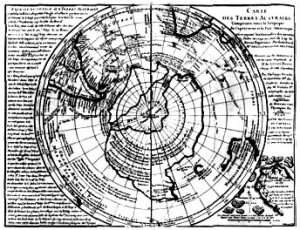 apparently ice free, showing the landmass being composed of two separate islands.>Understandably, this map was seized upon by fans of Charles Hapgood, who had suggested the existence of a highly developed ancient civilization with advanced cartographic skills(c)(d).<
apparently ice free, showing the landmass being composed of two separate islands.>Understandably, this map was seized upon by fans of Charles Hapgood, who had suggested the existence of a highly developed ancient civilization with advanced cartographic skills(c)(d).<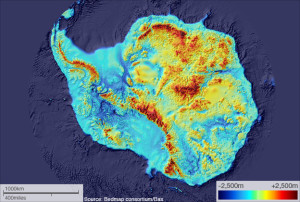
In 1958 a seismic survey of Antarctica seemed to confirm that configuration. This begged a number of questions. How could Buache have known this, without having earlier maps available to him? How could man have drawn maps of territory covered by ice for hundreds of thousands of years? Some felt that this complemented the evidence for an ice-free Antarctica provided by the Piri Reis Map. In turn, this gave some further support to those that advocate an Antarctic location for Atlantis. However, the two maps contradict each other, which should not be the case if they were based on surveys carried out by an advanced prehistoric civilisation.
However, the weight of the present ice cap has depressed the land to such an extent that if removed, it has been calculated that the isostatic rebound would be as much as 500 metres, which would give us a single landmass. This casts doubt on the possibility that a two- island ice-free Antarctica ever existed and consequently that the Buache Map is only speculative.
island ice-free Antarctica ever existed and consequently that the Buache Map is only speculative.
This is reinforced by the fact that “the French legends that cover the Buache Map also provide a clue as to the way the map may be read and understood. For example, the words conjecturée (conjectured) and soupçonnée (suspected) can be found on parts of the southern continent, indicating that this landmass was not copied from some ancient map, but was a hypothesis by Buache.”(b)
Another critical review of the Buache Antarctic map is to be found on the bad archaeology website(a).
(a) Philippe Buache’s map – Bad Archaeology (archive.org) *
(d) Buache Map (archive.org) *
Bennett, Kyle
Kyle Bennett is a British journalist and the author of Polar Wandering and the Cycle of Ages, which reviews the Earth Crustal Displacement (ECD) theory of Charles Hapgood. Prior to the book, he had written a number of articles about the history of ECD theory before Hapgood. One concerned Frederik Klee(a) and another was about Sir John Evans(b) the British archaeologist. He also reviews the history of ECD on Graham Hancock’s website(d). His maintains his own supporting website(e).
In case readers may feel that the subject of ECD is unrelated to Atlantis, they should keep in mind that the theory of Atlantis in the Antarctica(c), promoted by Rand Flem-Ath, is totally dependent on ECD and its occurrence within the memory of man.
(a) https://blog.world-mysteries.com/science/frederik-klee-the-unsung-hero-of-earth-crust-displacement/
(b) https://blog.world-mysteries.com/science/earth-crust-displacement-and-the-british-establishment/
(c) See: https://web.archive.org/web/20180524185741/https://www.flem-ath.com/
Expanding Earth Hypothesis *
The Expanding Earth Hypothesis.
For thousands of years, it was accepted that the surface of the earth was in a static state. This belief persisted until the rediscovery of America in 1492 and the cartographic improvements during the following century before Abraham Ortelius in his 1596 Thesaurus Geographicus[1225] proposed that the Americas had once been joined to Europe and Africa. It is often claimed that in 1620 Francis Bacon commented on the close fit of eastern South America with the west coast of Africa, however, this, according to G.L. Herries Davies, is an exaggerated interpretation of what he actually said(o).
A number of others concurred with the jig-saw suggestion until 1858 when the French geographer Antonio Snider-Pellegrini offered[0555] a theory of crustal movement that was more fully developed in 1912 by Alfred Wegener, which he came to label ‘continental drift’(e). Snider-Pellegrini also thought that the Earth had been much smaller at the time of the biblical Genesis(ac)! The big objection to the theory was a lack of a convincing mechanism to explain it(f).
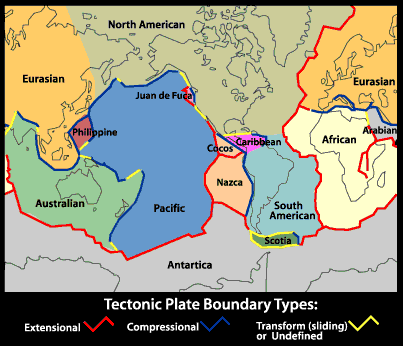 A number of writers have attempted to bring the theory of Continental Drift (CD) into the Atlantis debate. They seem to overlook the fact CD was proposed as a very very slow process, while Plato describes the demise of Atlantis as occurring in a single day and a night.
A number of writers have attempted to bring the theory of Continental Drift (CD) into the Atlantis debate. They seem to overlook the fact CD was proposed as a very very slow process, while Plato describes the demise of Atlantis as occurring in a single day and a night.
Wegener’s theory was debated until the late 1950’s when it morphed into the theory of Plate Tectonics (PT) following new developments in earth sciences in particular the recognition of seafloor spreading at mid-ocean ridges. However, PT as we know it demands subduction(z), which in itself has created new problems(aa)(ab).
The theory divides the lithosphere into a number of plates that are constantly moving in various directions at rates of a few centimetres a year. Competing with PT in the early years was the theory of Earth Crustal Displacement advocated by Charles Hapgood which claims that the entire crust of the earth moved as a unit. Endorsed by Albert Einstein it is fundamental to the theory of an Antarctic location for Atlantis proposed by Rose & Rand Flem-Ath.
Unfortunately, Plate Tectonics does not explain everything and ever since it gained the pre-eminence it currently enjoys, various writers have questioned what they perceive as its shortcomings(g)(h)(i).
A totally different proposal is that the earth is expanding. Although the concept did not get much attention until the 1980’s there are antecedents stretching back to 1888(a), when the earliest suggestion was made by the Russian, Ivan Yarkovsky (1844-1902). A year later the Italian geologist (and violinist) Roberto Montovani (1854-1933) proposed(I) a similar mechanism. In 1933, Ott Christoph
Hilgenberg(t) published Vom wachsenden Erdbal (The Expanding Earth) [1328].
In 1963, a Russian lady, Kamilla Abaturova, wrote to Egerton Sykes expressing the view that although her theory of an expanding Earth involved a ‘slow’ process, she proposed that at the time of Atlantis’ the radius of the Earth was 600 km shorter(af). In geological terms, this is far from ‘slow’!
The leading proponent of the theory today is arguably the, now retired, geologist Dr James Maxlow(b). A detailed outline of the theory is also offered on his website(c). For laymen like myself, a series of YouTube clips(d) are probably more informative. I have stated elsewhere that I am sympathetic towards the idea of earth expansion finding it somewhat more credible than plate tectonics. The truth of the matter is that since Ortelius first suggested that the continents of our planet had moved, all that has emerged since is a refinement of that basic idea leading to CD which became PT and as the latter still does not answer all the questions it raises, it is clear that further modification will be required. In December 2021, Maxlow published an overview of his current thinking on Expansion Tectonics(ag).
The Expanding Earth Hypothesis may, as its proponents claim, supply all those answers. Others do not think so, which brings me to J. Marvin Herndon who has ‘married’ the theory of an expanding earth with the idea of crustal plates(j) , naming his 2005 concept Whole-Earth Decompression Dynamics (WEDD).
The Thunderbolts.info website has a three-part article seeking to offer “an alternative to plate and extension tectonics”. The anonymous author suggests that an electrical element is involved in the development of our planet. An extensive look at mountain building is also included(y).
A 1998 paper(ah). by Bill Mundy an American Professor of Physics is still relevant. In it, he discusses the pros and cons of both plate tectonics and the expanding earth hypothesis and concluded that “Despite the success that standard plate-tectonics theory has enjoyed, there are phenomena that it currently is not able to model. Perhaps the most adequate model would incorporate Owens’ suggestion that there is both subduction and expansion. This would allow the earth to expand at a modest rate with reasonable changes in surface gravitation and also require some subduction for which the evidence seems convincing. But such a model presents the difficulty of finding suitable mechanisms for expansion, plate motion and subduction!”
In October 2022 Doug Fisher published a paper on Graham Hancock’s website highlighting weaknesses in the generally accepted theory of plate tectonics and seeking a review of the expanding earth hypothesis(ai).
Keith Wilson, an American researcher, has also developed a website(k) devoted to the EEH and linked it to Pole Shift. However, he goes further and introduces Mayan prophecies into the subject, which in my view is unwise in the light of recent events or rather non-events!
In the meanwhile, a number of Atlantis researchers have endorsed the EEH including, Stan Deyo, Georg Lohle and Rosario Vieni. Nicolai Zhirov referred to the growing support both in Russia and elsewhere for the EEH citing a number of its supporters, adding that “the idea of the Earth expanding (within reasonable limits) cannot be ruled out altogether as absurd.”[458.126]
A number of websites have dismissed the EEH as pseudoscience, which is confirmed by satellite measurements(m)(n).
There is also a variation of the standard expansion theory which proposes(q) that expansion may have occurred in fits and starts. There also seems to be evidence that the Earth is not alone with Venus expanding(r) and Mercury contracting(s).
Another matter that may be related to the claim of an expanding Earth is the question of the size of dinosaurs and other creatures and plants millions of years ago, which is claimed to have been impossible if gravity then was the same as today. A book[1218] by Stephen Hurrell has expanded on this idea. There is an interesting website(p) that deals with the enormous size of the dinosaurs as well as other creatures at the same period and the support it may offer the EEH.
Neal Adams, a respected graphic artist(u), is a vocal supporter of the EEH(v), but, he has gone further and has also proposed a growing Moon as well(w). Not content with that, he has extended his expansion investigations to other bodies in our Solar System, such as, Mars, Ganymede & Europa(x). Adams considers the term “Expanding Earth” a misnomer and has named his proposed expansion process ‘pair production’.(ad)
A December 2018 paper by Degezelle Marvin offers some new support for the EEH(ae). The author includes an interesting comparison of the problems of the currently accepted paradigm of plate tectonics with possible solutions offered by EEH. The author concludes with;
“The problems with plate tectonics were presented in this paper. Earth scientists dogmatically follow the plate tectonics theory that is falsified by geological data while Earth expansion is clearly a viable candidate to replace plate tectonics. Analysis map of the age of the oceanic lithosphere showed that the isochrons only ft on a smaller Earth with a calculated radius. Mountain formation has even been presented as a logical result of the Earth’s expansion. The average rate of the growth of the Earth’s radius is 1.22cm/year, obtained by geological methods.”
Finally, I cannot help thinking about those Victorians who thought that they had reached the pinnacle of scientific understanding. They were wrong and, I believe, that so are we, although we are slowly, very slowly, edging towards the truth, which may or may not involve the vindication of the Expanding Earth Hypothesis.
(a) https://www.checktheevidence.co.uk/cms/index.php?option=com_content&task=view&id=394&Itemid=59
(b) https://www.expansiontectonics.com/page2.html
(c) https://www.expansiontectonics.com/page3.html
(d) https://www.youtube.com/watch?v=OUkEu6YYR3s
(e) https://en.wikipedia.org/wiki/Continental_drift
(f) https://www.scientus.org/Wegener-Continental-Drift.html
(g) https://davidpratt.info/ncgt-jse.htm
(h) https://davidpratt.info/lowman.htm
(i) https://www.newgeology.us/presentation21.html
(j) https://web.archive.org/web/20200926204322/http://nuclearplanet.com/
(l) https://en.wikipedia.org/wiki/Roberto_Mantovani
(n) https://blogs.scientificamerican.com/history-of-geology/2014/05/12/the-expanding-earth/
(o) Francis Bacon and Continental Drift (archive.org) *
(p) The Inflating Earth: 4 – Gravity | MalagaBay (archive.org)
(q) https://web.archive.org/web/20161203151134/http://www.xearththeory.com/expansion/
(r) https://web.archive.org/web/20200808000231/https://www.xearththeory.com/expanding-venus/
(s) https://web.archive.org/web/20200807234839/https://www.xearththeory.com/mercury/
(u) https://en.wikipedia.org/wiki/Neal_Adams
(v) https://www.naturalphilosophy.org/site/dehilster/2014/09/22/is-the-earth-expanding-and-even-growing/
(w) Neal Adams: 02 – The Growing Moon | MalagaBay (archive.org)
(x) https://www.youtube.com/watch?v=zy3_sWF7tv4
(y) https://www.thunderbolts.info/forum/phpBB3/viewtopic.php?f=4&t=16534 (link broken Oct. 2019) See: https://atlantipedia.ie/samples/archive-3326/
(z) https://www.thoughtco.com/what-is-subduction-3892831
(aa) https://www.newgeology.us/presentation8.html
(ac) https://www.annalsofgeophysics.eu/index.php/annals/article/view/4622
(ad) https://malagabay.wordpress.com/2015/12/17/neal-adams-01-the-growing-earth/
(ae) https://www.gsjournal.net/Science-Journals/Research%20Papers-Astrophysics/Download/7531
(af) Atlantis, Volume 16, No. 1, February 1963.
(ag) NCGTJV9N4_Pub.pdf (registeredsite.com)
(ah) https://www.grisda.org/assets/public/publications/origins/15053.pdf
(ai) Maps, Myths & Paradigms – Graham Hancock Official Website
Rengifo, Robert
Robert Rengifo was a little known Chilean professor who flourished in the early decades of the 20th century. He had an intense interest in the prehistory of America and presented 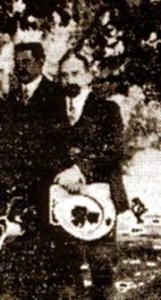 his views in the Proceedings of the prestigious Societe Scientifique du Chili(The Scientific Society of Chile) from 1904 until 1935. He focused on the aboriginal peoples of Chile and in particular Patagonia in the extreme south. His attention was drawn even further south to Antarctica where he controversially concluded that man had originated (rather than Africa). Then following a catastrophic axial pole shift that destroyed Atlantis, which was located in Antarctica, people were forced to migrate, populating the rest of the Americas and then the world.
his views in the Proceedings of the prestigious Societe Scientifique du Chili(The Scientific Society of Chile) from 1904 until 1935. He focused on the aboriginal peoples of Chile and in particular Patagonia in the extreme south. His attention was drawn even further south to Antarctica where he controversially concluded that man had originated (rather than Africa). Then following a catastrophic axial pole shift that destroyed Atlantis, which was located in Antarctica, people were forced to migrate, populating the rest of the Americas and then the world.
Rafael Videla Eissmann, who has championed Rengifo’s work has drawn attention to an excerpt from the epic poem, La Araucana, by Alonso de Ercilla y Zúñiga (1533-1594) which translates from the original Castilian as
“Chile, fertile and known land
in the famous Antarctic region
from ancient nations respected
because of being strong, important and powerful”.
Eissmann believes that this suggests knowledge of an ancient Antarctic polar civilisation!
While many of his conclusions may now appear purely speculative, in fact, Rengifo thought his views would eventually be vindicated by archaeology. The Monte Verde site in southern Chile has since been dated to around 11,000 BC. In addition, the enormous dressed stone blocks of El Enladrillado, also in Chile, raise questions about the technological capabilities of the region’s early inhabitants.
This apparent movement of peoples from south to north was endorsed by Arthur Posnansky in his 1919 book La Hora Futura [0941] The ensuing half century saw more of his conclusions echoed by researchers such as Charles Hapgood, the Flem-Aths, Hugh Auchincloss Brown and Robert Argod.
His work has recently been highlighted in a 2008 book[792] by Rafael Videla Eissmann as well as in a series of papers on his website(a). Another overview of Rengifo’s theories is available online(b).
(a) https://obrasrafaelvidelaeissmann.blogspot.com/ (Spanish) [use search facility]
*(b) https://web.archive.org/web/20160326042154/https://www.alertaaustral.cl/articulo.php?id=190*
Klee, Frederik
Frederik Klee (1808-1864) was a Danish scholar and was a parliamentarian from 1858 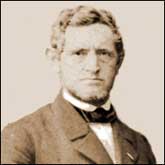 until his death. He published his Le Déluge in Copenhagen in 1842 and in Paris[794] in 1847, a work which included many original ideas. He was one of the first to suggest the possibility of an earth axial shift, although in the French edition of his book he discusses the 1844 theory of Baron René de Boucheporn, who also supported the idea of a pole shift. But, Boucheporn followed Carli, attributing it to an encounter with a comet in contrast to Klee’s contention that the cause was internal.
until his death. He published his Le Déluge in Copenhagen in 1842 and in Paris[794] in 1847, a work which included many original ideas. He was one of the first to suggest the possibility of an earth axial shift, although in the French edition of his book he discusses the 1844 theory of Baron René de Boucheporn, who also supported the idea of a pole shift. But, Boucheporn followed Carli, attributing it to an encounter with a comet in contrast to Klee’s contention that the cause was internal.
Allan & Delair[014.14] quote Klee as contending ”that certain ancient hieroglyphics refer to a displacement of the heavens at the time of the Deluge.”
Some of Klee’s ideas were ahead of his time and were forgotten until the following century when they were echoed in the work of Wegener and Hapgood.
Full English language biographies of Klee plus excerpts from his book are now available(a)(b).
(a) See: Archive 5144)
(b) https://blog.world-mysteries.com/science/frederik-klee-the-unsung-hero-of-earth-crust-displacement/
Cartography
Cartography is defined by The International Cartographic Association “as the discipline dealing with the conception, production, dissemination and study of maps.” The earliest land maps can be traced back to Babylonia around 1400 BC. In 2017, Evangelos Livieratos, Professor Emeritus of the Aristotelian University of Thessaloniki Cartography Department, offered evidence that the ancient Greeks were the first to develop a primitive GPS system, using the stars and their relationship with the earth’s surface(g).
O.A.W. Dilkie (1915-1993) was an English classical scholar and the author of a well-regarded paper Greek and Roman Maps [1753]. The BBC offered an overview of the development of cartography since the 15th century(k).
The subject entered the Atlantis arena in 1665 with the publication of a speculative map(a) of Atlantis, situated in the Atlantic, by Athanasius Kircher. It was allegedly based on earlier Egyptian maps, but unfortunately, there has been no corroborative evidence to support this contention. Kircher’s map had been used to bolster a variety of location theories – Azores, Russia, Baffin Bay and Greenland, Kircher himself favoured the Azores.
Hy-Brasil was reputed to be an island to the west of Ireland and frequently associated with the story of Atlantis. The Genoese cartographer, Angellino de Dalorto (fl.1339), placed Hy-Brasil on a map as early as 1325. It is further claimed that Dalorto, sometimes known as Angelino Dulcert, also depicted Australia on his 1339 portolan chart(l).
However, on some 15th-century maps, the islands of the Azores appear as Isola de Brazil, or Insulla de Brazil. Apparently, it was not until as late as 1865 that Hy-Brasil was finally removed from official naval charts.
Another feature on ancient that can confuse is the placing of the south at the top of old charts, two examples of which are Kircher’s map of Atlantis and Al-Idrisi’s Tabula Rogeriana. Caroline Williams has an interesting article(e) on the BBC website relating to the history of map orientation.
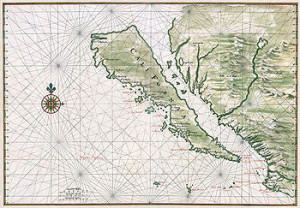 The unreliability of early maps is highlighted by the manner in which California has been depicted. In the 16th century, the maps of both Mercator and Ortelius correctly show Baja California as a peninsula, but in the following 17th and 18th centuries, it became an island on many charts despite written evidence to the contrary. There is a website dedicated to a study of the ‘island of California’(I), which incongruously ends with a brief reference to Atlantis, placing it in the Atlantic in the Region of Bermuda.
The unreliability of early maps is highlighted by the manner in which California has been depicted. In the 16th century, the maps of both Mercator and Ortelius correctly show Baja California as a peninsula, but in the following 17th and 18th centuries, it became an island on many charts despite written evidence to the contrary. There is a website dedicated to a study of the ‘island of California’(I), which incongruously ends with a brief reference to Atlantis, placing it in the Atlantic in the Region of Bermuda.
Donald S. Johnson in his well-illustrated Phantom Islands of the Atlantic[0652] discusses in detail the history of seven legendary islands. This fascinating book offers every reason to treat the details of early cartography with extreme caution.
Further difficulties with old cartography are the result of early mapmakers having a dread of blank spaces, a view outlined in a recent (Nov. 2017) National Geographic online article(h).
The most widely referred to map in relation to Atlantis as well as advanced ancient civilisations is the Piri Reis chart. This arguably depicts an ice-free Antarctica and has been used to develop the idea that Atlantis had been located there and was destroyed when a sudden pole shift caused the southern icecap to move to its present position. Rose and Rand Flem-Ath are the leading proponents of this idea based on the findings of Charles Hapgood. Other maps such as that of Phillipe Buache, the renowned French geographer, published in 1737, are claimed to show an ice-free Antarctica.
It is claimed by Ivan Petricevic that The Ben Zara Map of 1487 “displays remnants of glaciers in Britain, but also extremely detailed depictions of islands in the Mediterranean and Aegean seas. Today, these islands still exist, but due to rising water levels, these are now underwater.”(j)
Dale Drinnon had an interesting if speculative, article on ancient maps and their possible relevance to the story of Atlantis(b). Another article in Atlantis Rising magazine (July/August 2014) argues that the quality of medieval navigational charts (portolans) of the Mediterranean exceeded the capabilities of the instruments and knowledge in the region at that time and must have originated elsewhere. However, Roel Nicolai at Holland’s Utrecht University, who expressed these sentiments, was unwilling to nominate Atlantis as the source of the maps(c).
When asked in a recent interview what he meant by ‘advanced civilisation Graham Hancock revealed(u) that “I think we’re talking about a civilization – more than 12,000 years ago – which was as advanced as our civilization was, say in the late 18th century or early 19th century. In other words, they could navigate the world, they could explore the world, they could measure the world accurately, they had precise astronomy, they could create beautiful maps that were accurate in terms of latitude and longitude. That kind of level of civilization.”
Enrique García Barthe is an Argentinian cartographer who has an interesting Spanish/English website(d) dealing with pre-Columbian maps. Although many people have heard of the Piri Reis Map and the controversy surrounding it, García Barthe introduces a lot of new maps that appear to complement Piri Reis.
In 2015, Melissa Brooks used the data in the Atlantipedia chronology of location theories to develop a map(f) showing the distribution and level of support for the various theories on offer.
(a) https://www.thenakedscientists.com/forum/index.php?topic=19800.100
(b) See: Archive 3591
(d) https://web.archive.org/web/20111026020513/https://globalizacion.no.sapo.pt/ingles/pon_ing_1.htm
(e) https://www.bbc.com/future/story/20160614-maps-have-north-at-the-top-but-it-couldve-been-different
(f) https://www.guerrillacartography.org/?s=Atlantis
(h) Why Ancient Mapmakers Were Terrified of Blank Spaces (archive.org) *
(i) https://californiaasanisland.org/
(j) 9 Extremely Ancient Maps That Should Not Exist | Ancient Code (archive.org)
(k) https://www.bbc.com/travel/story/20180819-the-travel-guides-that-charted-our-world
(l) https://www.dailygrail.com/2015/01/ancient-maps-reveal-a-thread-of-truth-weaved-through-antiquity/
(m) https://www.dailygrail.com/2019/04/watch-graham-hancock-discuss-his-new-book-america-before/
Coelho-Teeluck, Jennifer
Jennifer Coelho-Teeluck>>(1957-2021)<<was a Canadian researcher who proposed the isthmus of Central America as the location of Atlantis. In a paper presented to the 2008 Atlantis Conference in Athens she equated Plato’s “shoals of mud” with the narrow neck of land where Panama is. She speculates further that a global catastrophe around 10,000 BC led to the destruction of Atlantis and led to the dispersal of survivors north and southward. Elsewhere(a) she links this catastrophe to the theory of Charles Hapgood, which postulates the movement of the outer crust by a number of degrees.
(a) https://web.archive.org/web/20101128153252/https://questmagazine.com/z_jennifer_teeluck_qm200512_atlantis-destruction-planetary-phenomenon.html (link broken) *

